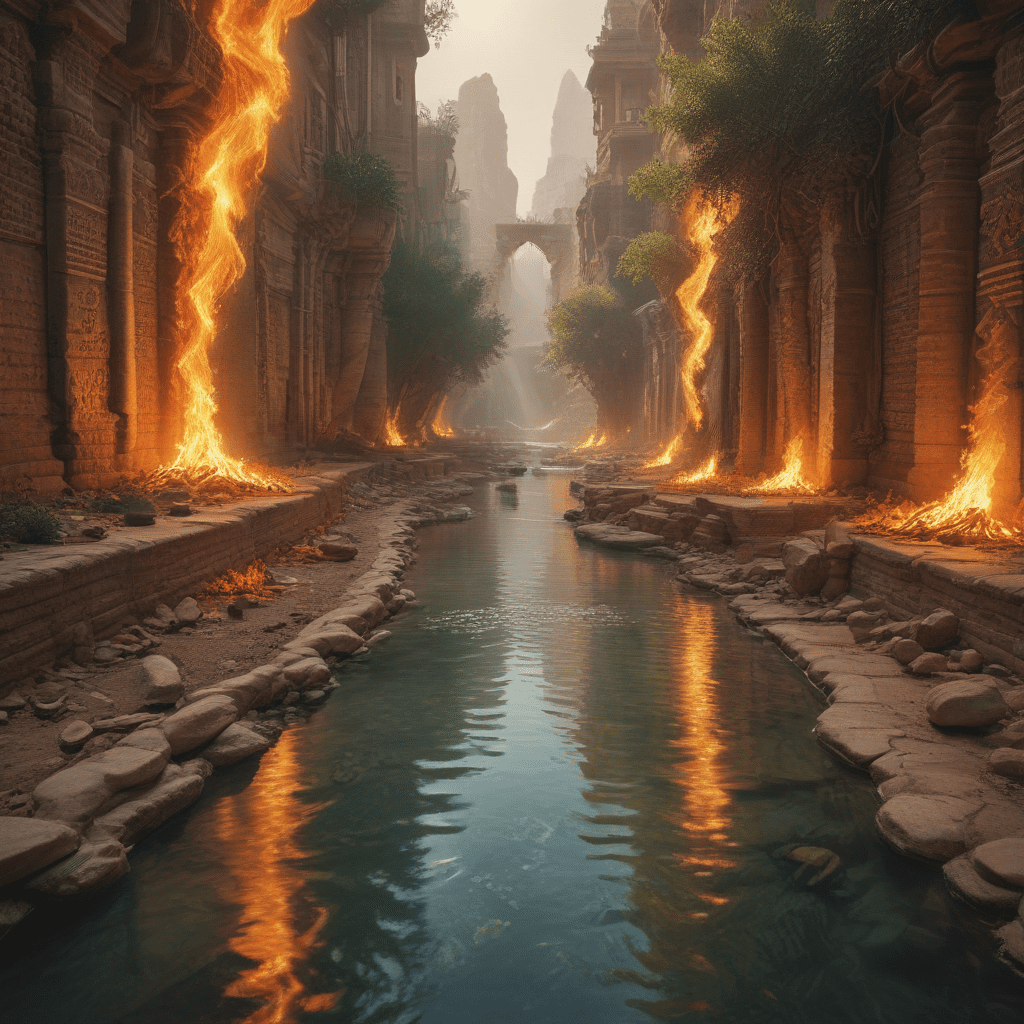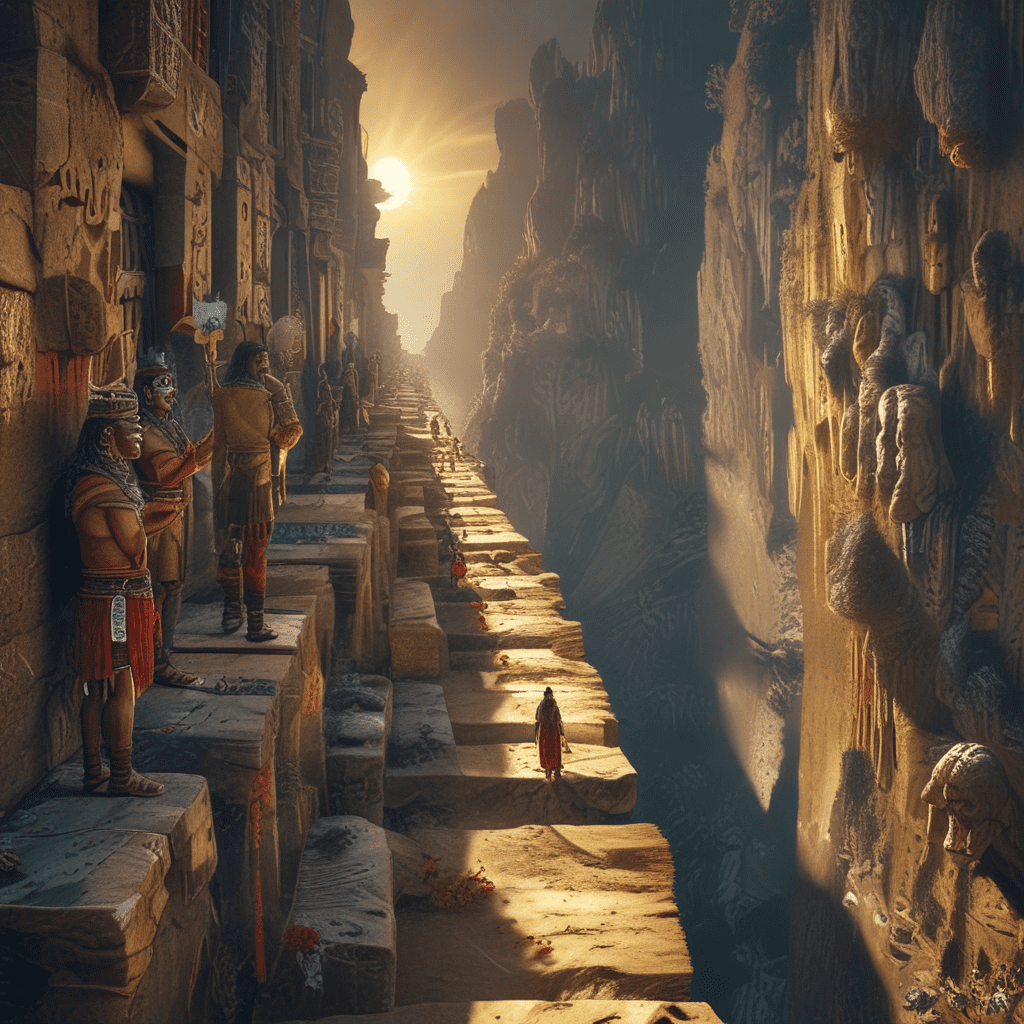The Mythical Rivers of Ancient Persia
Introduction: Exploring the Realm of Persian Mythology
Delving into the rich tapestry of Persian mythology unveils a captivating world brimming with mythical creatures, epic heroes, and enchanting tales. Among these legendary elements, the mythical rivers hold a significant place, serving as both physical and symbolic representations of life, knowledge, and the cycle of existence. By exploring these rivers, we embark on a journey through the depths of Persian mythology, uncovering profound insights into the ancient Persian worldview and its enduring impact on culture and society.
The River of Life: Ardvīsūr Anāhitā – Guardian of Fertility and Abundance
Standing as the epitome of life and fertility, Ardvīsūr Anāhitā reigns as a revered deity within the Zoroastrian pantheon. Revered as the
The River of the Underworld: Duzakh – A Chilling Journey into the Afterlife
In the depths of the Persian underworld lies Duzakh, a chilling river that symbolizes the final destination for the souls of the deceased. This ominous waterway serves as a potent reminder of the consequences of sin and transgression, instilling fear and respect for the divine order. Descriptions of Duzakh vary across sources, with some depicting it as a boiling, fiery river, while others portray it as an icy, desolate wasteland. Regardless of its specific characteristics, Duzakh remains a powerful symbol of death and punishment in Persian mythology.
The River of Fire: Ātar – A Cleansing Force and Symbol of Purification
Ātar, the sacred fire, manifests as a mystical river in Persian mythology, representing purity, cleansing, and transformation. This celestial river flows through the heavens, illuminating the path to righteousness and guiding the soul towards enlightenment. The Zoroastrians revered fire as a divine entity, believing it possessed the power to drive away darkness and evil. Ātar's association with the river further emphasizes its purifying nature, symbolizing its ability to wash away impurities and pave the way for spiritual growth.
The River of Time: Zāyand-e Rūd – A Reflection on the Cycle of Life and Death
Zāyand-e Rūd, the ever-flowing "Life-Giving River," embodies the relentless passage of time in Persian mythology. Its ceaseless movement mirrors the cyclical nature of life and death, reminding us that all things must eventually come to an end. The river's ever-changing flow symbolizes the constant flux of existence, the ebb and flow of fortune, and the inevitability of change. As the water flows, so too does time, carrying us relentlessly towards our ultimate destination.
The River of Tears: Cheshmeh-ye Ashk – A Symbol of Human Sorrow and Compassion
In the realm of emotions, the River of Tears, Cheshmeh-ye Ashk, represents the profound depths of human sorrow and compassion. This poignant river serves as a testament to the vulnerability of the human heart, reminding us of the shared experience of suffering and loss. The river's flowing waters symbolize the outpouring of grief and empathy, connecting us to the universal experience of human fragility.
Conclusion: The Enduring Power of Mythical Rivers in Shaping Persian Culture
The mythical rivers of ancient Persia hold profound significance within the cultural fabric of Iranian society. These celestial waterways serve not only as captivating elements of folklore but also as potent symbols of life, knowledge, death, and the human condition. Their enduring presence in Persian literature, art, and religious beliefs reflects their deep-seated influence on the collective imagination. By exploring these mythical rivers, we gain invaluable insights into the ancient Persian worldview and its enduring legacy in shaping cultural and societal values.



